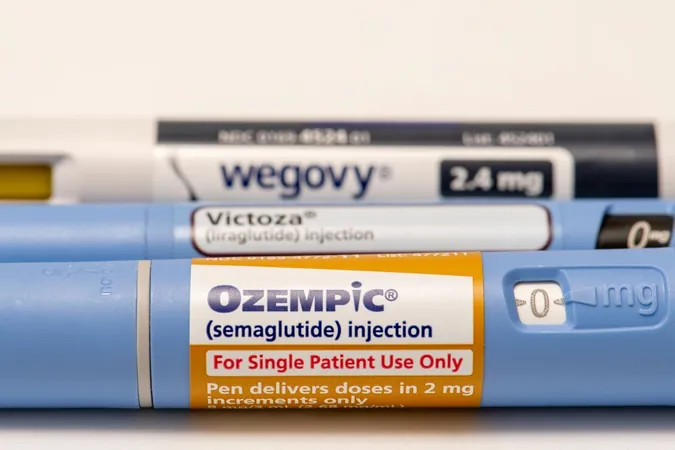
Unlocking the Secrets of Ozempic: The Weight Loss Drug Changing Lives
2024-09-23
Ozempic and Wegovy have emerged as game changers in the world of weight loss and metabolic health. These medications, which belong to a class known as glucagon-like peptide-1 receptor agonists (GLP-1RAs), are not just aiding individuals in shedding pounds but are changing the entire landscape of obesity management.
While many may think of weight loss as simply shedding pounds for aesthetic reasons, it’s important to recognize the myriad health benefits that come along with losing weight, particularly for those struggling with obesity. Higher body weights are linked to various health complications, including joint pain and sleep apnea. Despite the ubiquity of diet plans and closed-door weight loss programs, achieving significant, long-lasting weight loss has historically been a monumental challenge for many.
Ozempic, whose active ingredient semaglutide mimics the natural hormone GLP-1, is already known for its remarkable weight loss results – patients on Wegovy, a higher-dose version, can lose up to 15% of their body weight within a year. This far exceeds the success rates typically seen with conventional weight loss methods. In fact, where older weight loss drugs might have helped users shed around 7.5%, semaglutide has set a new standard, prompting researchers to explore its broader implications in health management.
What’s fascinating is that GLP-1 plays a critical role in regulating appetite and digestion. After we consume food, GLP-1 is released from the gut to help stimulate insulin production, slow gastric emptying, and curb appetite. For those with obesity, research indicates they may produce less natural GLP-1, contributing to persistent weight gain. Consequently, GLP-1RAs like semaglutide may effectively counteract this deficiency, although complexities in obesity suggest multiple contributing factors.
Beyond weight loss, emerging studies indicate that semaglutide brings other health benefits – reducing risks of heart and kidney disease, and possibly even preventing certain cancers and improving mental health by lessening cravings for unhealthy lifestyle choices. Interestingly, these benefits may not solely arise from weight loss due to metabolic improvements tied to GLP-1's effects: anecdotal evidence suggests that its influence on reducing food cravings and enhancing feelings of fullness also plays a role in better overall mental health.
However, like all medications, semaglutide isn’t without its downsides. Common side effects include gastrointestinal issues such as nausea and constipation, stemming from the drug’s mechanism of action. While these side effects are generally mild and often diminish over time, there are potential serious risks such as gastroparesis (a condition that affects stomach motility) and intestinal blockages. Still, significant complications appear to be rare for most users.
Looking forward, the pharmaceutical landscape for obesity treatment is becoming even more robust. Newer medications, like tirzepatide from Eli Lilly, have shown promising results by targeting multiple hormones related to hunger, hinting at a future where treatments may not just improve weight loss further but also enhance the overall patient experience.
Despite these advancements, it is crucial to address the underlying causes of the obesity epidemic. Currently, nearly 42% of adults in the U.S. suffer from obesity, with rates continuing to ascend. As new treatments develop, understanding and combating the root causes of obesity – such as lifestyle, environmental factors, and genetic predispositions – remains a pivotal concern in public health.
As we gaze into the future of obesity treatment, the development of drugs like Ozempic signals a new era. However, for genuine long-term solutions, addressing systemic issues around diet, health education, and lifestyle choices will be critical. Ozempic is proving to be more than just a temporary fix; it's shaping the discussion around what effective, safe weight management can look like in the 21st century.



 Brasil (PT)
Brasil (PT)
 Canada (EN)
Canada (EN)
 Chile (ES)
Chile (ES)
 España (ES)
España (ES)
 France (FR)
France (FR)
 Hong Kong (EN)
Hong Kong (EN)
 Italia (IT)
Italia (IT)
 日本 (JA)
日本 (JA)
 Magyarország (HU)
Magyarország (HU)
 Norge (NO)
Norge (NO)
 Polska (PL)
Polska (PL)
 Schweiz (DE)
Schweiz (DE)
 Singapore (EN)
Singapore (EN)
 Sverige (SV)
Sverige (SV)
 Suomi (FI)
Suomi (FI)
 Türkiye (TR)
Türkiye (TR)